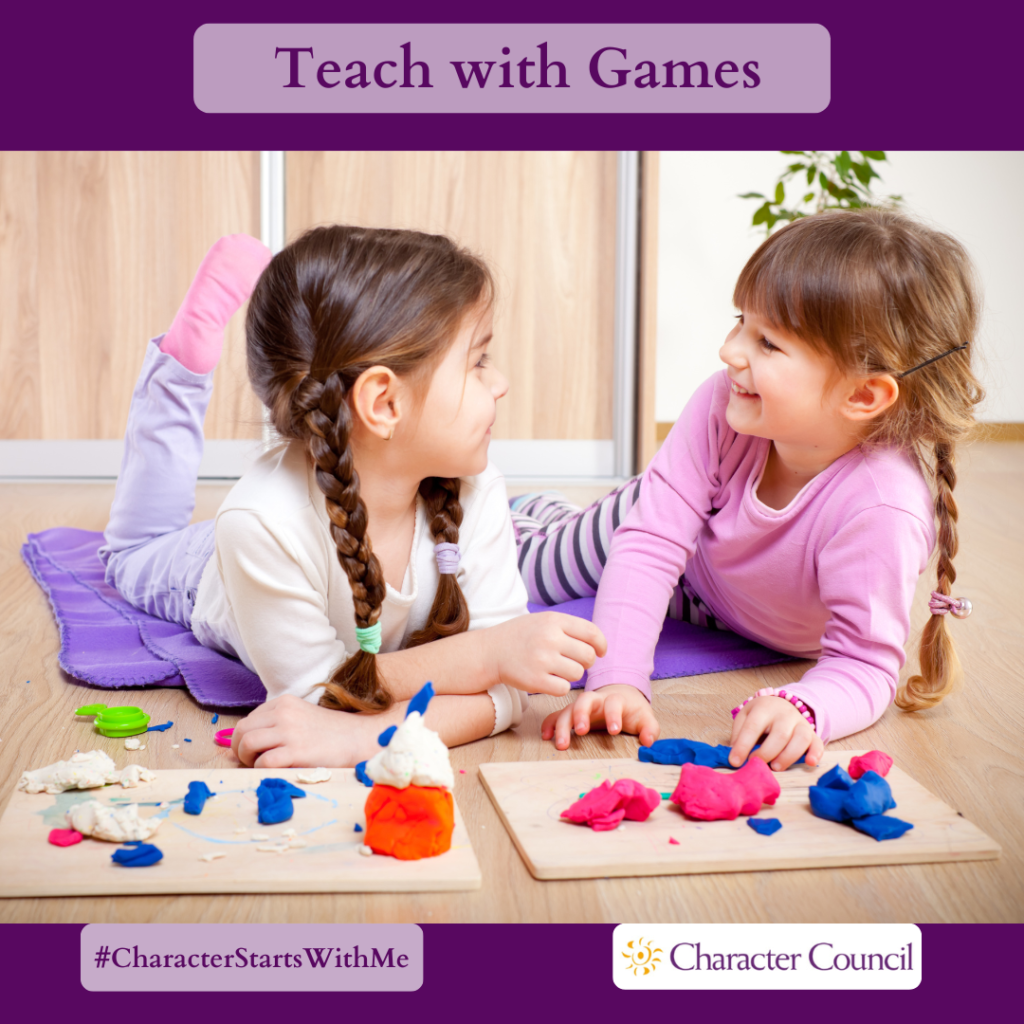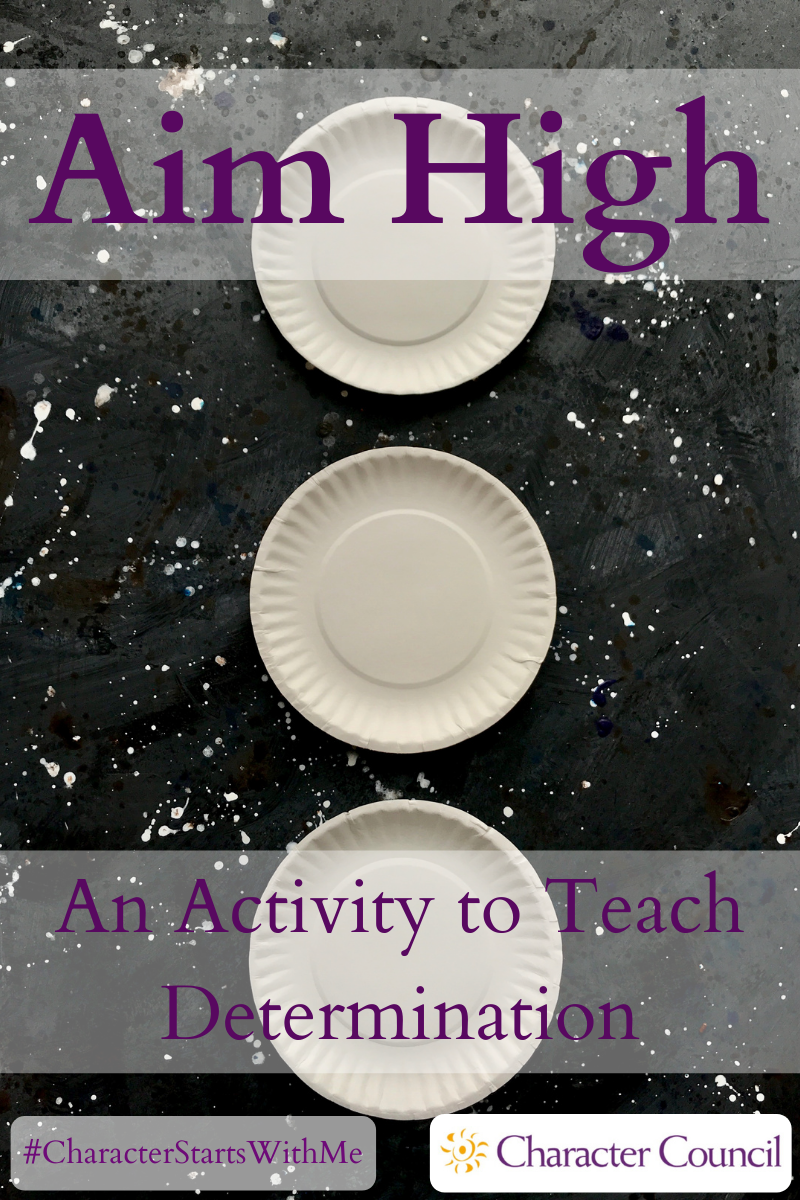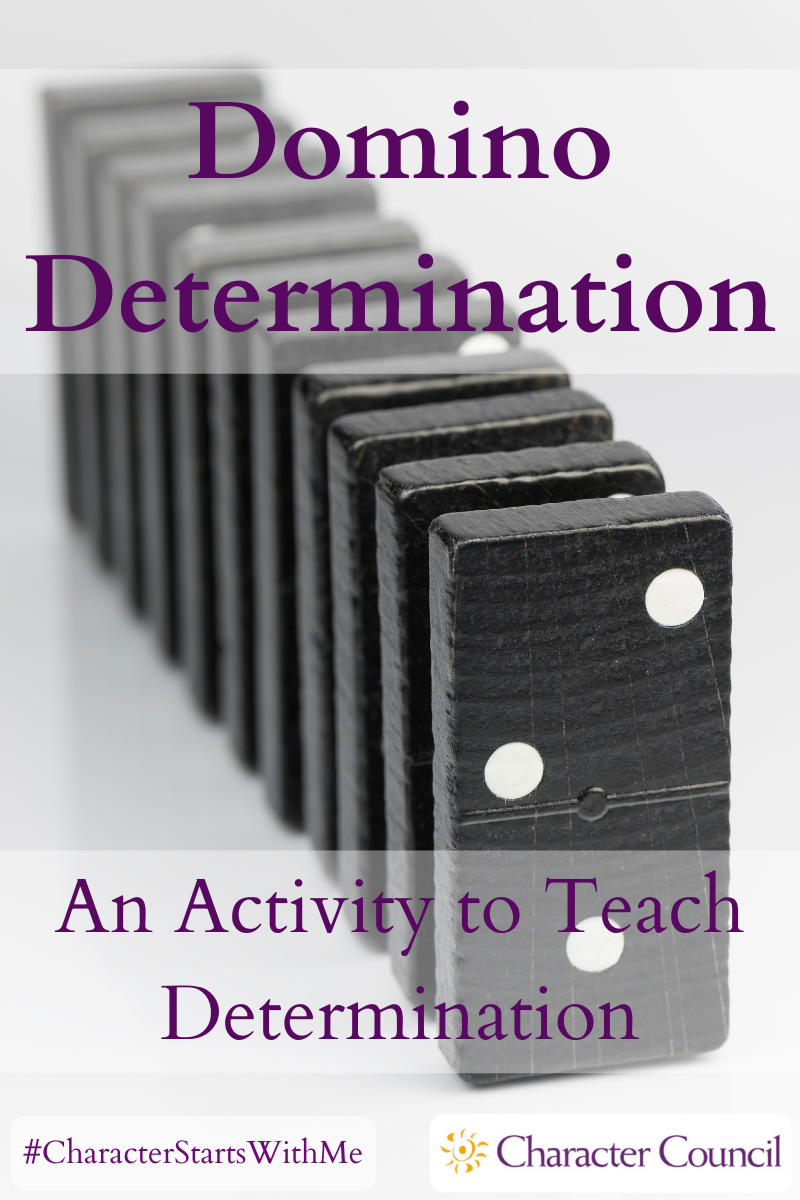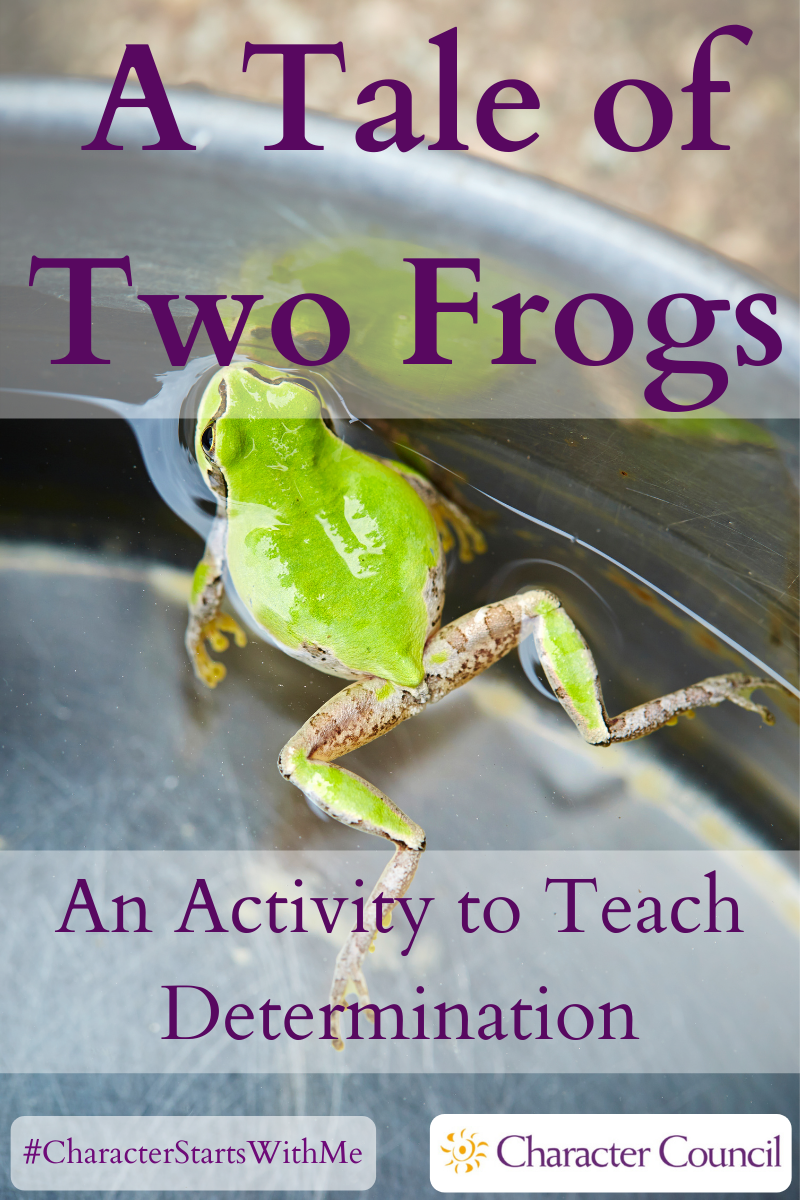
Determination Activities
The activities here are fun ways to teach character. The game aspect makes the lesson more memorable. Each activity has processing questions at the end. Without processing the activity, the exercise is just a game. To make it a stronger lesson when you process it, relate the character quality to a core value that your organization promotes.
Consider picking a student to run the activity. You will need to give them time ahead of the activity to prepare. Another option is to pick a few students to run the activity for a younger classroom after you have run it for your class. Encourage your students to repeat it in the home for younger siblings or even parents.

Aim High
For this activity, you will need 4 paper plates. Mark one number on each plate: 5, 10, 15 20. You will need a handful of pennies, buttons, or some other small object. Each student will receive 2 – 3 pennies, buttons, or some small object. Mark a line on the floor with masking tape. Place the first plate (marked 5) close enough to the line so that when standing behind the line, most students can throw the penny and have it land on the plate. Place the three remaining plates in order farther away from the first plate so that the higher the value the farther the plate. The 20-point plate still needs to be within a reasonable distance for the age and skills of your students. Use only 3 plates if 4 plates make the distance too far. The last plate needs to be a challenge for the students; they should not be able to throw to that plate easily. Start by asking the students to stand in a line behind the tape line. They will take turns throwing their pennies onto the first plate. Once everyone has had a chance to do that, let them collect the pennies and try again, this time aiming for the second plate. When they master the second plate, they can move onto the third and so on. You decide if the students move on individually or as a group. With the numbers on the plates, you can have the students keep score based on how many plates they hit. You can also number the plates 1, 2, 3, 4 if you do not wish to keep score. For much younger students you may want to use Hoola Hoops or box lids to provide larger targets.
To process the activity, ask these or similar questions:
- Did you like this throwing game?
- How much more difficult was the last plate compared to the first plate?
- How difficult would it have been to start with the last plate?
- Do you think mastering the closer plates helped to learn how to hit the last plate?
- Do you think breaking goals down into smaller goals helps to achieve the bigger goals?
- Do you think you will remember these plates when you have a big goal to achieve?
Domino Determination
You will need dominos or any object that can be set up like a domino drop chain. You will need to set up 3 chains. The first chain should have the dominos set farther and farther apart until they are too far apart to trigger the next one so the chain stops falling. The second chain should have the middle of the chain offset so that the second half of the chain does not fall. The third chain should have all the dominos aligned so that they all fall consecutively. Before tripping the domino chains, discuss goals and how determination plays a part in achievement. You may want to find an age-appropriate story or just a few facts about Thomas Edison’s determination to invent the light bulb. He had an unbelievable number of failures before hitting on the right combination. Talk about how stopping work on a project makes it hard to stay interested in completing it. You lose momentum. Demonstrate this with the first domino chain. Next, you can talk about how distraction or losing your focus on a goal makes it hard to achieve. Demonstrate this with the second domino chain. Staying determined helps achieve goals. Demonstrate this with the third domino chain.
To process the activity, ask these or similar questions:
- Is it fun to play with dominos?
- What happened in the first domino chain?
- Can you see how important it is to keep working?
- What happened in the second domino chain?
- Can you see how important it is to stay focused?
- What happened in the third domino chain?
- Can you see the importance of focus and continuous work to be determined to get a job done?
- How many dominos were in the third chain? Did the first domino trigger the last domino right away? (No – took many steps to get to the end.)
- Do you think visualizing the steps you take to complete a goal or project like dominos in a chain will help you stay determined to finish?
A TALE OF TWO FROGS
Two frogs fell into a can of cream,
Or so I’ve’ heard it told:
The sides of the can were shiny – steep,
The cream was deep and cold.
“O, what’s the use?” croaked Number 1.
“Tis fate; no help’s around.
Good-bye, my friends Good-bye, sad world”
And weeping still, he drowned.
But Number 2, of sterner stuff,
Dog-paddled in surprise,
The while he wiped his creamy face
And dried his creamy eyes.
“I’ll swim awhile, at least,” he said-
Or so I’ve heard he said:
“It really wouldn’t help the world
If one more frog were dead.”
An hour or two he kicked and swam,
Not once he stopped to mutter.
He kicked and kicked and swam and kicked.
Then hopped out, via BUTTER!
Author Unknown
Use this poem to illustrate the need for Determination. After reading it, you can demonstrate the making of butter. Label a mason jar or old mayo jar “Determination” and fill it half-full of room temperature heavy whipping cream. You can make this go faster by adding a marble or culturing the cream first by adding a few teaspoons of cultured yogurt or sour cream. Tighten the lid and pass the jar around and let each student shake it. It will take anywhere from 10 – 30 minutes to form butter. Don’t stop when it looks like whip cream. The butter will form and separate from the buttermilk that remains, if any. Drain the buttermilk off, stir in a pinch of salt and enjoy on crackers. You will make half as much butter as the cream with which you started. It should taste delicious, slightly sour, with no aftertaste. If it is bubbly or smells yeasty or gassy, discard it. You may need more than 1 jar, depending on your class size.
For websites that offer kid-friendly science on butter making, go to:
http://www.makeandtakes.com/edible-science-experiment-making-butter-whipped-cream
https://happyhooligans.ca/homemade-butter/
For a video version of Two Frogs in Cream, go to:
https://www.youtube.com/watch?v=3i0MpSU-e5A
When finished, process the activity with these or similar questions:
- Did you like the story of the frogs?
- Did you like making butter?
- Which frog are you more like – the one who gave up or the one who kept swimming?
- Do you think that butter will help remind you to keep swimming?


